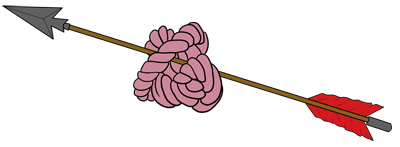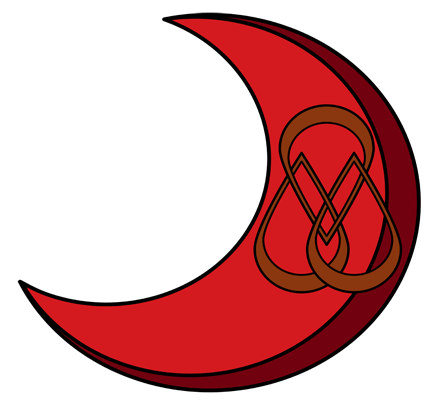Priests of Parora
Structure
The Parorans have a wide range of deities that they follow:
PrimaryDeities
Dallyr the Young goddess
Sielyr the Reborn god
Deja the Fish god
Amael the Sculptor goddess
Sieliah the Navigator goddess
Zalah the Steel goddess
Kielach the Desire god
Allah the Courier goddess
Rielach the Secret goddess
Secondary Deities
Muriel goddess of Typhoons
Jeha god of Mapmaking
Alik goddess of Psychology, Birds, and Day
Zalik deities of Politics
Atil the Memory goddess
Anael god of the Sky
Afel goddess of the Harvest and the Underworld
Sielik god of Warfare and Thunder
Samue god of Midwives
Ardain god of Architecture
Honiel the Light goddess
Aniel god of the Oceans
Aphiel goddess of Bridge-building
Sielach god of Disease, Flowers, and Love
Dallah goddess of Darkness
Aron goddess of Beggars
PrimaryDeities
Dallyr the Young goddess
Sielyr the Reborn god
Deja the Fish god
Amael the Sculptor goddess
Sieliah the Navigator goddess
Zalah the Steel goddess
Kielach the Desire god
Allah the Courier goddess
Rielach the Secret goddess
Secondary Deities
Muriel goddess of Typhoons
Jeha god of Mapmaking
Alik goddess of Psychology, Birds, and Day
Zalik deities of Politics
Atil the Memory goddess
Anael god of the Sky
Afel goddess of the Harvest and the Underworld
Sielik god of Warfare and Thunder
Samue god of Midwives
Ardain god of Architecture
Honiel the Light goddess
Aniel god of the Oceans
Aphiel goddess of Bridge-building
Sielach god of Disease, Flowers, and Love
Dallah goddess of Darkness
Aron goddess of Beggars
Mythology & Lore
Cosmological Views
Life after death is different, depending on the person's life, although minor sects say the afterlife is a fiery pit for all souls. The afterlife can be reached by living Ferali.
Tenets of Faith
In general, the religion is focused on community fellowship, helping others, and to a lesser degree, advancing knowledge.
On a personal level, people focus on spiritual growth, self-control, and sometimes avoiding divine wrath.
Ethics
Good people are expected to be faithful and pious.
Evil is defined as negligence, blasphemy, and sloth.
Taboo subjects are bodily functions, wearing certain colors, but never eating certain animals.
The spirit world includes evil spirits, folk magic, and sometimes benevolent nature spirits. The average person avoids any spirits, and often greatly fears them.
The highest art forms are woodworking, beadwork, and more rarely papermaking.
Outsiders are usually feared, but never mistrusted.
Evil is defined as negligence, blasphemy, and sloth.
Taboo subjects are bodily functions, wearing certain colors, but never eating certain animals.
The spirit world includes evil spirits, folk magic, and sometimes benevolent nature spirits. The average person avoids any spirits, and often greatly fears them.
The highest art forms are woodworking, beadwork, and more rarely papermaking.
Outsiders are usually feared, but never mistrusted.
Worship
Prayers
The divine will always hear a woman's petition.
The divine is more likely to speak to military leaders.
The divine is less likely to speak in healing rituals.
Rituals
Rituals are occasionally quiet, private, and take place by a natural landmark.
Participants must be above a certain social rank.
Preparation involves self-sacrifice, self-denial, and artifact preparation.
Rituals include specific movements, initiated priests, and sometimes elected priests.
The ritual calendar is set according to the tides. Rituals begin at twilight and occasionally last three days.
There are 33 holy days in a calendar year. 22 holy days focus on new priests. 8 holy days celebrate past victories. Celebrations usually include theater troupes/shows and private family celebrations, and not public sentencing.
The divine will always hear a woman's petition.
The divine is more likely to speak to military leaders.
The divine is less likely to speak in healing rituals.
Rituals
Rituals are occasionally quiet, private, and take place by a natural landmark.
Participants must be above a certain social rank.
Preparation involves self-sacrifice, self-denial, and artifact preparation.
Rituals include specific movements, initiated priests, and sometimes elected priests.
The ritual calendar is set according to the tides. Rituals begin at twilight and occasionally last three days.
There are 33 holy days in a calendar year. 22 holy days focus on new priests. 8 holy days celebrate past victories. Celebrations usually include theater troupes/shows and private family celebrations, and not public sentencing.
Priesthood
The most important symbol consists of a knot and a ranged weapon. Lesser symbols are a crescent moon and 3 interlocking shapes.
The most common liturgical colors are burnt sienna and venetian red. The highest religious ranks wear puce, and mauve is reserved for holy days.
Structure
The religious heirarchy is branching, strong, and religious roles are specialized. Primary functions are to foretell/prophesy, heal the sick, and sometimes talk to the dead.
Clergy
Clergy are widow/ers who are military and possessing a specific ability. To join a religious order requires being appointed by religious leaders, and more rarely appointed by political leaders.
Lifestyle
The average clergical lifestyle is ascetic, although some live in a solitary manner. Clergy are expected to be celibate, and display their status with stylized clothing, and more rarely a special uniform.
The most common liturgical colors are burnt sienna and venetian red. The highest religious ranks wear puce, and mauve is reserved for holy days.
Structure
The religious heirarchy is branching, strong, and religious roles are specialized. Primary functions are to foretell/prophesy, heal the sick, and sometimes talk to the dead.
Clergy
Clergy are widow/ers who are military and possessing a specific ability. To join a religious order requires being appointed by religious leaders, and more rarely appointed by political leaders.
Lifestyle
The average clergical lifestyle is ascetic, although some live in a solitary manner. Clergy are expected to be celibate, and display their status with stylized clothing, and more rarely a special uniform.

Type
Religious, Temple
Permeated Organizations
Divines
Location
Controlled Territories
Related Items
Related Ethnicities
Related Myths





Comments